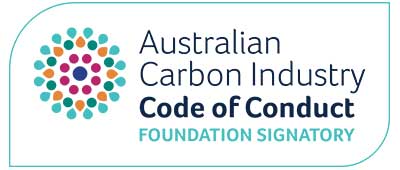The Forest for the Trees
By SEAN APPOO
The native forest logging industry has already been shut down in parts of Australia and is most definitely in the sunset of its existence. If we don’t begin seriously planning for transition out of these practices, we risk repeating the experience of where the industry was shut down abruptly leading to forests becoming an un-managed bushfire risk. The Aboriginal Carbon Foundation (AbCF) is involved in research to develop a business model to address this transition.
The AbCF recently attend the Forest Carbon Summit in Canberra hosted by Forestry Australia. The summit itself was an interesting mix of attendees, topics and views designed to equip forest carbon practitioners, forest managers and a diverse range of stakeholders with the knowledge and tools needed to successfully navigate the forest carbon landscape. However, it didn’t directly address the elephant in the room – transition out of native forest logging.
The summit was always going to be an interesting event in the current context of the closures of the West Australian and Victorian native forest logging operations, and the participant mix of foresters, financiers, ecological services, carbon developers, NGOs, and a lone voice from Indigenous Australia. Again, we’ll reiterate, that the Indigenous Estate in Australia covers over 50% of the landmass, but we continue to be under-represented in these forums due to the hangover of colonisation and institutionalised racism.
Much of the conversation of the summit revolved around inadequate forest/farming carbon methods to date, and problems with modelling tools like FullCAM. This focus misses the real questions we should be answering: what does a transition away from native forest logging look like? Are there current industry subsidies for the native forest logging sector that could be applied to the transition for the first 5 years? What are the issues with current native forest management that saw the extent of 2019 bushfires? The longer we kick down the road the more we risk abrupt native forest logging closures like the ones witnessed in Victoria and Western Australia.
The AbCF has been working on a business case for the transition from native forest logging to Indigenous Land Management in the Southeast NSW region, using the improved native forest management carbon method. Getting there will take a transition in the way we think about forests, to value them as carbon assets instead of timber resources.
We believe that there is a moral imperative for the management of such initiatives to be under the control of Traditional Owner groups such as Local Aboriginal Land Councils for the reasons of sophisticated ecological knowledge, cultural authority and stewardship, fairness and equity, biodiversity protection and enhancement, landscape restoration and bushfire mitigation. The bushfire mitigation aspect is a critical component to ensure that the carbon stays within the forest and isn’t periodically released into the atmosphere during bushfire events.
The added social and economic benefits of having these transition projects managed by Traditional Owner groups contribute to Closing the Gap impacts that sustainable incomes will produce. Looking at this through a public health lens, it’s common sense that many of the social determinants of health would be addressed, producing long-term government savings in a range of sectors.
The short, medium, and long-term core-benefits that would be achieved through this transition from native forest logging to Indigenous Land Management could be a shining example for how Indigenous and non-Indigenous People collaborate and live together. We acknowledge there are many skills and resources needed to contribute to this transition, however, leave the bush and land restoration to us… we’ve looked after it for more than 65,000 years.























